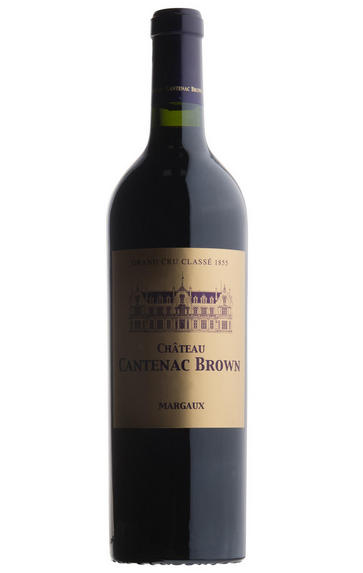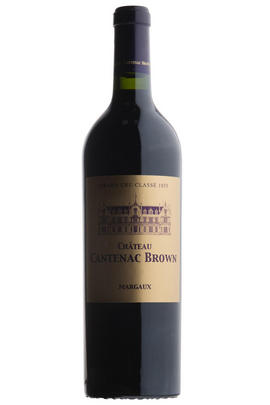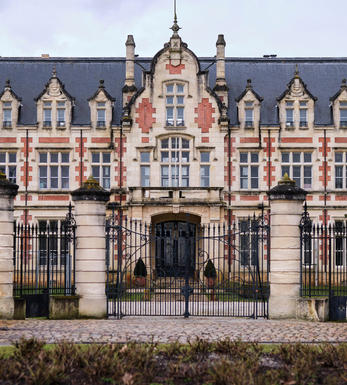
2018 Château Cantenac Brown, Margaux, Bordeaux

Critics reviews
Jane Anson, Decanter
About this WINE

Chateau Cantenac Brown
Cantenac-Brown, a 3ème Cru Classé estate, is located in the Haut-Medoc wine appellation on the western extremes of the Margaux appellation.
As with so many Bordeaux estates, the tale of the last 120 years focuses on early years of problems, caused by both vineyard diseases and economic depradations, followed by recent revival once the property has been bought by someone with the means to invest properly in its future.
The revitalisation of Cantenac-Brown only really looked a realistic possibility with its acquisition in by AXA Millésimes in 1989. The AXA team, led at that time by the since semi-retired Jean-Michel Cazes, with the help of Daniel Llose and under the direction of Christian Seely, began to turn the estate around. The team had a history of success in Bordeaux, not least at Lynch-Bages but at other estates such as Pichon-Baron, Suduiraut and Quinta do Noval.
Cantenac Brown has 42 hectares of vineyards - 65% Cabernet Sauvignon, 30% Merlot and 5% Cabernet Franc.
Cantenac Brown is typically Margaux in character - fragrant and perfumed on the nose and medium bodied and harmonious on the palate, with soft cassis-scented fruits and a lingering finish.

Margaux
If Pauillac can be seen as the bastion of ‘traditional’ Red Bordeaux, then Margaux represents its other facet in producing wines that are among Bordeaux’s most sensual and alluring. It is the largest commune in the Médoc, encompassing the communes of Cantenac, Soussans, Arsac and Labaude, in addition to Margaux itself. Located in the centre of the Haut-Médoc, Margaux is the closest of the important communes to the city of Bordeaux.
The soils in Margaux are the lightest and most gravelly of the Médoc, with some also containing a high percentage of sand. Vineyards located in Cantenac and Margaux make up the core of the appelation with the best vineyard sites being located on well-drained slopes, whose lighter soils give Margaux its deft touch and silky perfumes. Further away from the water, there is a greater clay content and the wines are less dramatically perfumed.
Margaux is the most diffuse of all the Médoc appelations with a reputation for scaling the heights with irreproachable wines such as Ch. Margaux and Ch. Palmer, but also plumbing the depths, with too many other châteaux not fulfilling their potential. There has been an upward shift in recent years, but the appellation cannot yet boast the reliability of St Julien. However, the finest Margaux are exquisitely perfumed and models of refinement and subtlety which have few parallels in Bordeaux.
Recommended Châteaux: Ch. Margaux, Ch. Palmer, Ch. Brane-Cantenac, Ch. Rauzan-Ségla , Ch. Dufort-Vivens, Ch. Ferrière, Ch. du Tertre, Ch. Giscours, Ch. d'Angludet.

Cabernet Sauvignon Blend
Cabernet Sauvignon lends itself particularly well in blends with Merlot. This is actually the archetypal Bordeaux blend, though in different proportions in the sub-regions and sometimes topped up with Cabernet Franc, Malbec, and Petit Verdot.
In the Médoc and Graves the percentage of Cabernet Sauvignon in the blend can range from 95% (Mouton-Rothschild) to as low as 40%. It is particularly suited to the dry, warm, free- draining, gravel-rich soils and is responsible for the redolent cassis characteristics as well as the depth of colour, tannic structure and pronounced acidity of Médoc wines. However 100% Cabernet Sauvignon wines can be slightly hollow-tasting in the middle palate and Merlot with its generous, fleshy fruit flavours acts as a perfect foil by filling in this cavity.
In St-Emilion and Pomerol, the blends are Merlot dominated as Cabernet Sauvignon can struggle to ripen there - when it is included, it adds structure and body to the wine. Sassicaia is the most famous Bordeaux blend in Italy and has spawned many imitations, whereby the blend is now firmly established in the New World and particularly in California and Australia.


Buying options
Add to wishlist
Description
With a plot of Cabernet Sauvignon planted 15 years ago coming on stream, the aim is now for it to make up 65 to 75% of the blend every year. This makes a stronger, denser style of wine, but also with complexity and freshness. This is a lush Cantenac Brown, with lots of texture and an almost fig-like richness. The palate is a broad and deep mouthful. Drink 2026-2040.
Blend: 69% Cabernet Sauvignon, 28% Merlot, 3% Cabernet Franc
wine at a glance
Delivery and quality guarantee